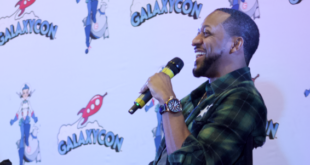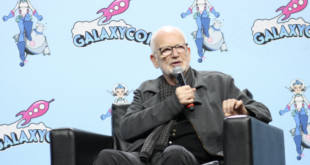I don’t normally write articles that receive a lot of comments, but twice I struck enough of a nerve with people that they responded in the hundreds. One was on everyone’s favourite topic, gun control, and the other was on the use of Native Americans (First Nations in Canada) as mascots on sports teams. I was astounded at how many people couldn’t get their heads around the fact that a race of people would be offended by being equated with the San Diego Chicken or other figures of ridicule that dress up in costume and generally run around making fools of themselves at public events.
The most common argument I heard was these mascots were honouring the brave fighting spirit of Native Americans and how it should be taken as a compliment, not an insult. What these people seemed to forget is that when you reduce a people to one characteristic they lose their humanity as we ignore every other aspect of their culture. If you want to honour Native Americans maybe you should teach students in schools how one of the models for the American Constitution was the Iroquois Confederacy and their system of governance, instead of creating cartoon figures who have little or no bearing on the realities of Native American life across North America.
You can’t really blame the sports teams and fans, though, for the mascots. These representations are merely an extension of the way in which Native Americans, and indigenous people everywhere, have been portrayed in popular media since the 19th century. From Buffalo Bill’s depiction of the slaughter of men, women, and children at Wounded Knee Creek as a glorious triumph for the 7th Cavalry to contemporary New Age books selling “Native wisdom,” the culture of over 500 different nations has been exploited and distorted with depressing regularity and with little concern for reality. Now Canadian filmmaker Neil Diamond, a Cree Indian from Northern Quebec near the Arctic Circle, has made a documentary tracing the history of Hollywood’s representations of Native Americans. While it’s already made the round of film festivals last year, Reel Injun will have its American television debut on the Public Broadcasting Service’s (PBS) show Independent Lens November 2, 2010.
A mixture of film clips from the earliest silent movies and interviews with film critics, actors, directors, and Native American activists, Reel Injun not only shows how Native Americans have been depicted on the big screen over the years, it also explores the effect these negative stereotypes had on Natives. It seems like the camera has always loved them, as the first films ever made, Thomas Edison’s back in the late 19th century, were of Laguna Pueblo dances. They were also the first peep shows to be shown in Times Square in New York City — put a penny in the slot and watch the savages dance — and there is something almost pornographic in the lurid black and white images of the dancers caught by this early camera.
Still, the early days of silent film, when technology was simple and cheap, actually saw movies being made by Native Americans about Native Americans depicting the realities of their lives at the time. It wasn’t until the “talkies,” and more specifically Westerns, came along that the problems began. Diamond himself talks about how as a young kid the only movies he saw on his reserve were the ones shown in a church basement on Saturday afternoons and how he and his friends would never identify with the Indians on the screen when a Western was shown. First of all none of them wore feather headdresses or rode horses, and secondly, who’d want to be the bad guy?
Ah, but that’s the past you say, and things have changed since then. Look at Dances With Wolves with its sympathetic portrayal of the Lakota, for example. While it’s true, according to some of the film critics interviewed in Reel Injun, that it was a watershed in the way it depicted Native Americans as multi-dimensional humans, it was still an outsider’s view of what Native life was like, and a distorted one at that, according to some. Russell Means, a Lakota and former leader in the American Indian Movement, was offended by the depiction of his nation requiring some “white guy with a mullet” to teach them how to fight. The people who defeated Custer at Big Horn didn’t need “Lawrence of the Plains” to teach them anything.
In fact, while most interviewed agreed, including Clint Eastwood, John Trudell, and Native film critic Jesse Wente, individual performances by people like Chief Dan George, Graham Greene, and Gary Farmer were invaluable in changing people’s perceptions of the one-dimensional stoic Indian, it wasn’t until Native Americans began making films about Native Americans that real change occurred. Smoke Signals, based on a story by Sherman Alexie and directed by Chris Eyre, was set on the Spokane reservation in the state of Washington. Nobody was wearing feathers, riding a horse or talking in pidgin English. The characters lived in the modern world and dealt with the day to day shit that concerns most Native Americans today.
However, even Eyre says that his movie was made with the wider world in mind, and not until the release of The Fast Runner by Inuk director Zacharias Kunuk was there was a film by, about, and for Native people in North America. Winner of the Camera d’Or for Best Feature Film at the Cannes Film Festival in 2001, Fast Runner was set a thousand years ago among the people of the far north. Shot entirely in the language of the people, it was a gritty and real representation of what life was like in the days before contact with Europeans. There was nothing glamourous or holy about the life depicted — it was just who they were and what they had to do in order to survive.
That’s a long way from the days of Chuck Conner playing Geronimo or Native actors being told they didn’t look “Indian” enough to play themselves. However stereotypes die hard and it’s going to take a lot more movies along the lines of The Fast Runner before the image of the noble savage is erased from people’s minds. Perhaps the days are gone when young Native boys are going to be beat up after Saturday afternoon matinees like Russell Means and his brother were for being Injuns, or be made to feel ashamed of their heritage because they only see themselves as villains on the screen. However movies like Eastwood’s Flags Of Our Fathers and Jim Jarmusch’s Dead Man and their honest depiction of Natives are still in the minority and reach far fewer impressionable minds than Disney’s Pocahontas with its depiction of a real woman as a Barbie Doll Indian Princess.
Reel Injun might be lighthearted in tone at times, but it tackles a serious subject with directness and courage. Many people who watch this movie aren’t going to be happy as it cuts the legs out from under American icons like John Wayne and Western movies in general. However there were lots of people who thought segregation was a good thing too and we know how that turned out. Not all Native Americans are noble, great horsemen, and very few of the ones I know talk to animals any more than I do. For those who don’t understand what all the fuss is about when people complain about mascots or how Natives are depicted in films, if you keep an open mind when watching this film, you’ll come away at the end of the hour with a far better understanding of why it hurts so much.
 Blogcritics The critical lens on today's culture & entertainment
Blogcritics The critical lens on today's culture & entertainment



